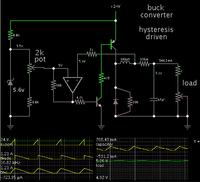Eshal
Advanced Member level 1

- Joined
- Aug 29, 2012
- Messages
- 470
- Helped
- 16
- Reputation
- 32
- Reaction score
- 15
- Trophy points
- 1,298
- Location
- Nowhere :)
- Activity points
- 5,149
Hello experts!
I want know the difference between converters and regulators.
Buck, boost and buck-boost are either converters or regulators?
If they are converters then how they can regulate the output voltage and current and how they named as converters then, why not regulators?
I know, regulators have feedback part. I want to know where is feedback part of this regulator?
Regards,
Princess
I want know the difference between converters and regulators.
Buck, boost and buck-boost are either converters or regulators?
If they are converters then how they can regulate the output voltage and current and how they named as converters then, why not regulators?
I know, regulators have feedback part. I want to know where is feedback part of this regulator?
Regards,
Princess








